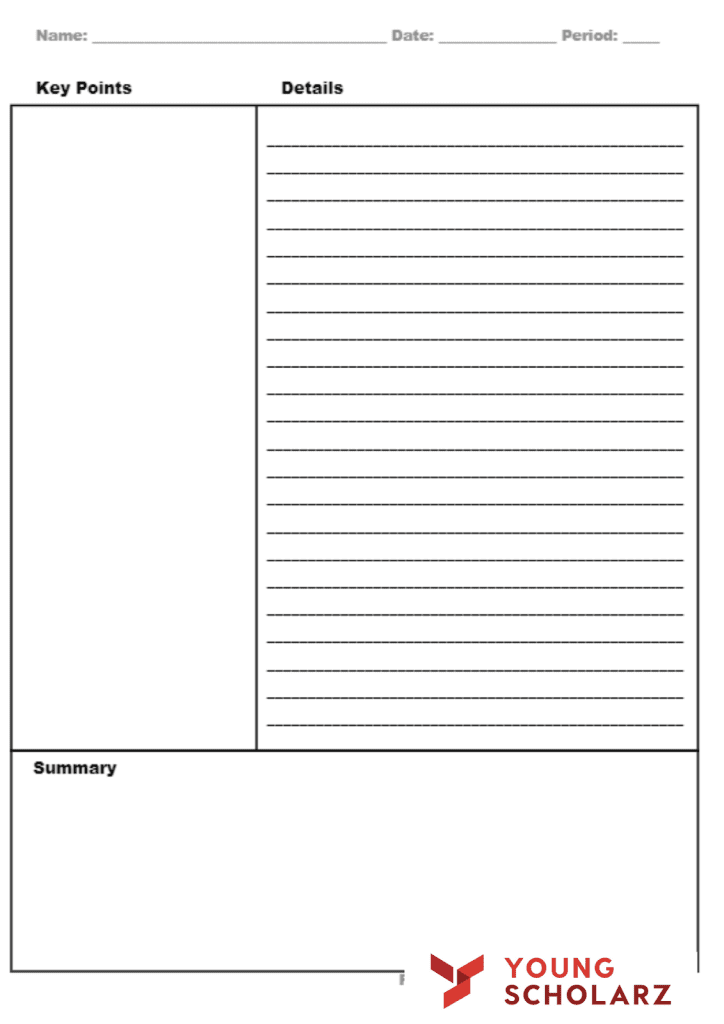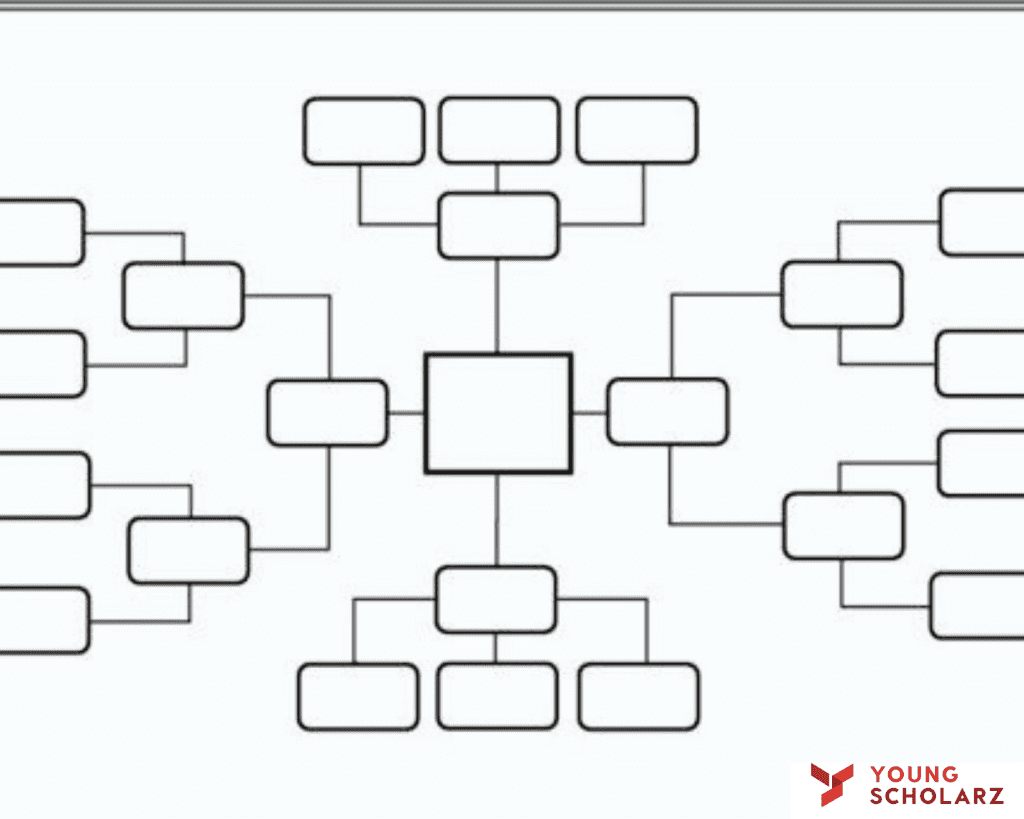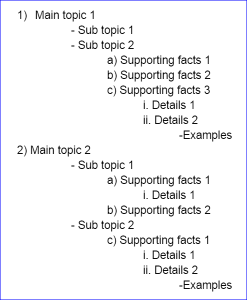
If you worry that you’ll not be able to memorise or grasp the entire syllabus in time for exams, this blog post is for you. Effective note-taking is a process of consolidating useful information in a manner that can be easily deciphered. It helps in the strategic storage of information that is presented to us in different situations. Whether you are in a classroom setting, trying to absorb all that is being presented by the tutor or you find yourself in the middle of a solo study session, making notes will help your brain process and remember information in an efficient way. Listed below are a few methods which will help you ease into this process, especially during the exam season.
1. The Cornell Method:
This technique relies on summaries of the course material. Whenever you listen to or read new lessons, you should note down the key points and later construct them into a precise summarization of otherwise lengthy content. You can become creative in this method by using easier versions of complicated words and phrases. This method is beneficial when it comes to remembering the major concepts and themes of the subject matter. Along with that, it’ll help you revise easily.
- To apply the Cornell Method in your routine, divide a blank sheet of paper into 3 sections: a 2.5” margin to the left, a 2” summary section on the bottom, and a main 6” in-class note section. Use the main notes section to take notes during class, the cues section to review your notes, and once you’re done with the class, write down things you’ll need to remember and a prompt for each. You can also use this section for vocabulary words and study questions. In the summary segment at the bottom, write a summary of your notes. This is where you will highlight the main points. Given below is a skeleton structure of the method which will help you to put it to execution flawlessly.

2. Mind Mapping
Mind Mapping is one of the most visually efficient ways to memorize a range of complex data. They are an academic tool that helps pupils utilise their cognitive abilities to the maximum. As opposed to linear notes, mind maps are visual structures of information that allow you to see the big picture (how all the different ideas are connected to one another). They are used as a study aid to help clarify thoughts, determine relationships, simplify complex ideas and memorise information.
- In order to create a mind map, start with a specific concept that you want to learn. Place the center of a sheet and branch shoots from it, each noting a word or a phrase relating to the main topic. More branches sprout out from them adding more information to the primary concept till the point of completion. The sub-branches will contain detailed pointers for overall understanding. This helps develop and elaborate on the overall theme of the mind map. Including images and sketches can also be helpful in brainstorming and creating the sub-branch topics. Mind maps can be created on paper or on a computer with mind mapping software such as Bubbl.us and MindMeister which allow us to edit as we create. Feel free to download the template below and use it as per your needs.

3. Outlining Method
This technique is famous for its simplicity and speedy execution. However, dash or indented outlining is usually not recommended for certain subjects like physics or math. The information which is most general begins at the left with each more specific group of facts indented with spaces to the right while the relationships between the different parts are carried out through indenting. This method is not complicated as there are no numbers, letters, or Roman numerals needed.
- To use this way of note-taking, listen/read and then write in points in an organised pattern based on space indentation. Place major points farthest to the left, and indent each more specific point to the right. Levels of importance will be indicated by distance away from the major point. Indention can be as simple as or as complex as labeling the indentions with Roman numerals or decimals. Markings are not necessary as space relationships will indicate the major/minor points.

As you cruise into the exam season, knowing how to make concise notes will help you grasp and revise the subject matter effectively and efficiently. Young Scholarz offers exam-based intensive revision classes for all IGCSE and IB subjects and can help guide you with effective subject-specific study techniques to help you score excellent grades. We hope this blog post helps you in your exam-prep journey. Reach out to us via email, or social media, or register for a class to have a great learning experience!





